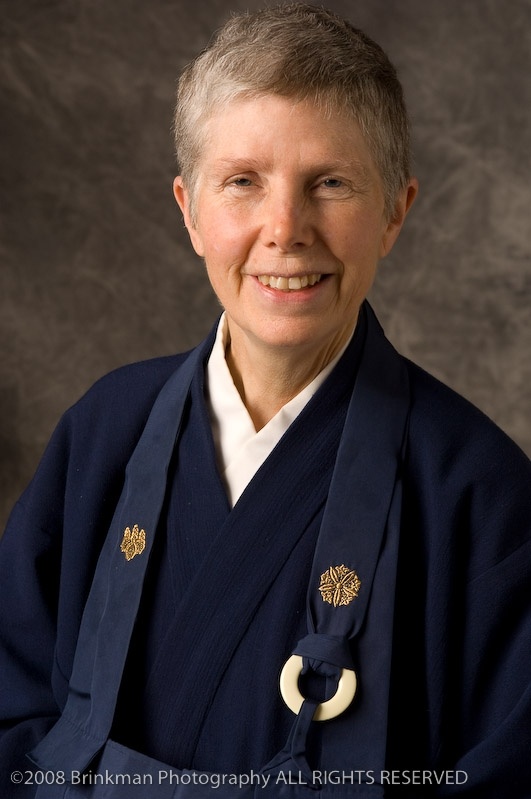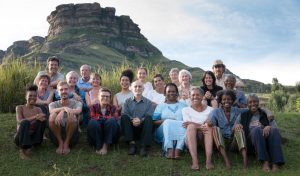
Jan Chozen Bays was driving through the winding country roads of Clatskanie, Oregon, to the old elementary school that she and her husband were proposing to turn into a Zen monastery. Tonight was a community meeting, at which they would explain their project to the town and hear their input on the construction plan. Expecting a polite but tense conversation, she stepped into the school cafeteria.
“When I arrived, it turned out that people were afraid to take any refreshments and did not want to wear name tags because they were afraid of cults,” she recalls.
Faced with such resistance, it seemed like the project would never go forward, but 15 years later, Great Vow Monastery has become an established part of this rural US community. The 8.5-hectare complex sits tucked among farms in a forested corner of the Pacific Northwest. The school’s former library is now a zendo, while the cafeteria welcomes community members for vegetarian meals. No longer viewed with suspicion, the 25 residents help set up chairs for town events, send a member to the local chamber of commerce, teach music in the local schools, and lend a hand at holiday celebrations. The concerted efforts of a Zen priest have built bridges in unexpected ways.
A slight woman with short gray hair, Jan Chozen Bays Roshi moves with the deliberate and determined motions of a doctor: knowing how to gently but firmly take a temperature, or demand attention from an unruly mind. A certified pediatrician since 1978 and a Zen priest since 1979, she was trained by Taizan Maezumi Roshi and is now a student of Shodo Harada Roshi. She has written several books, including Mindful Eating: A Guide to Rediscovering a Healthy and Joyful Relationship with Food (Shambhala 2009) and How to Train a Wild Elephant: And Other Adventures in Mindfulness (Shambhala 2011). Since 2002, she has been the co-abbot of Great Vow Monastery.
Her medical work with children inspired Chozen to dedicate the monastery to Jizo, a bodhisattva often associated with women and children, as well as travelers (in life and afterward). Jizo’s promise to not enter nirvana until all the hells are empty inspired the monastery’s name: “It’s called a vow without a wristwatch, a vow without a calendar; it’s an endless vow,” says Chozen. She has brought the Japanese mizuko ceremony, which is connected to Jizo, to the monastery to help families grieving the loss of a child. In turning this old elementary school into Great Vow Monastery, she has created a space that acknowledges all the aspects of childrearing, including the deep losses of miscarriage, abortion, sickness, and suicide.
Creating a residential Buddhist community in the rural US is not easy. Starting in 1985, Chozen and her husband, Hogen Bays, began running the Zen Community of Oregon from their living room, but by the 1990s they were looking for an alternative space. They found a place in the Columbia River Gorge, created by the beautiful river that runs between the states of Oregon and Washington, but after their first location was re-zoned as a historical monument, they could no longer build on the property. “We looked at motels, nursing homes, small apartment buildings, boy scout camps, a wrestling camp, a llama farm . . .” Chozen relates. “We finally found this school. It was perfect.”
Over time, Great Vow Monastery has succeeded in changing the minds of the local folks, who were skeptical when the Buddhists first bought the school. The residents reached out to the Zen community, and they found that the community reached back. “How they treat people here is based their judgment of what you do. Do you live what you say you live?” Chozen explains. Her husband volunteers at a local charity; she helped set up medical clinics in the schools. “We have really become part of the town,” she says.
Plenty of renovations have gone into transforming the old school into a monastery, but perhaps the most striking feature of the complex is the Jizo Garden, in which dirt pathways wind through mossy fir trees and sword ferns. Ducking under overhanging branches, Chozen points to an old interpretative sign: this path used to be a nature trail at the elementary school. Now, every few feet, a small statue with a sweet, childlike face peers up: Jizo. He is often adorned with offerings of children’s clothes, toys, and pictures of children who have passed away. As the forest slowly eats the offerings, others are placed there by new parents.
The mizuko kuyo, or water baby ceremony, was developed in Japan to offer spiritual support for grieving mothers, including those who have had miscarriages or have chosen to have an abortion. “Mostly it’s to deal with the genuine suffering that comes with the decision to end a life. People think that’s a decision lightly undertaken. It is not lightly undertaken,” says Chozen. “This is a way of recognizing these women and their partners need spiritual support.”
Chozen was inspired to begin offering the Jizo ceremony after she attended one in California. “After the ceremony, as I was heading back to Portland, I realized that my heart was palpably lighter. I hadn’t realized how heavy the burden of sorrow was, accumulated over 10 years of child-abuse work,” she writes in her book Jizo Bodhisattva (Shambhala 2003). “Also relieved was the hidden sorrow of my own miscarriage 12 years before. . . . When I realized how important this ceremony was, and how deep and long-lasting its effects could be, I . . . began to offer the ceremony.”
In the remembrance garden, there are rattles, musical instruments, a plastic telephone. There’s an old clock hanging from a tree branch, hands stopped, that reads: “JIZO TIME.” (“There are no time limits for Jizo!” jokes Chozen.) Prayer flags flap stiffly in the breeze. Whenever something at the monastery breaks, a bowl at dinner for example, Chozen brings it out to the garden and lays it among the ferns. She explains that brokenness is a natural part of the healing process: “Our very woundedness can become a way we can benefit other people,” she says.
Not all of the families who participate in the ceremony are practicing Buddhists, but they often find comfort in the silent company of other grieving parents. “When you’re grieving, you can feel so alone,” says Chozen. In the mizuko kuyo, parents make a small token, such knitting a hat or sewing a bib, or bring a favorite toy. They leave them in the remembrance garden among the mossy firs. The monastery residents create small Jizo statues out of clay. The garden also has 108 statues excavated from a temple in Japan and donated to honor the transmission of the Dharma in the West. The families are free to visit the garden at any time.
The ceremony, like much at Great Vow Monastery, draws from Japanese tradition without copying it directly. Chozen and Hogen Bays have picked which ceremonies make sense for a Western audience, while trying to remain true to Zen traditions. Residents learn to chant the Heart Sutra in both Japanese and English, but they also can join a marimba band. It is a matter of “what are cultural elements that aren’t helpful, and then what are essential elements that must be retained,” explains Chozen. “If there’s something that will help unify us with other groups [in Japan], they we might keep it.”
One tradition is important: every morning, the monastery residents gather in the zendo to chant for the ill, dying, or recently deceased. “People often send us names that they would like put on the chant list, so they know that we are praying for their loved ones,” says Chozen.
And the townsfolk, who once were so skeptical of the Zen monastery?
“Sometimes now people from the community send names,” she says. “Sometimes they come.”












